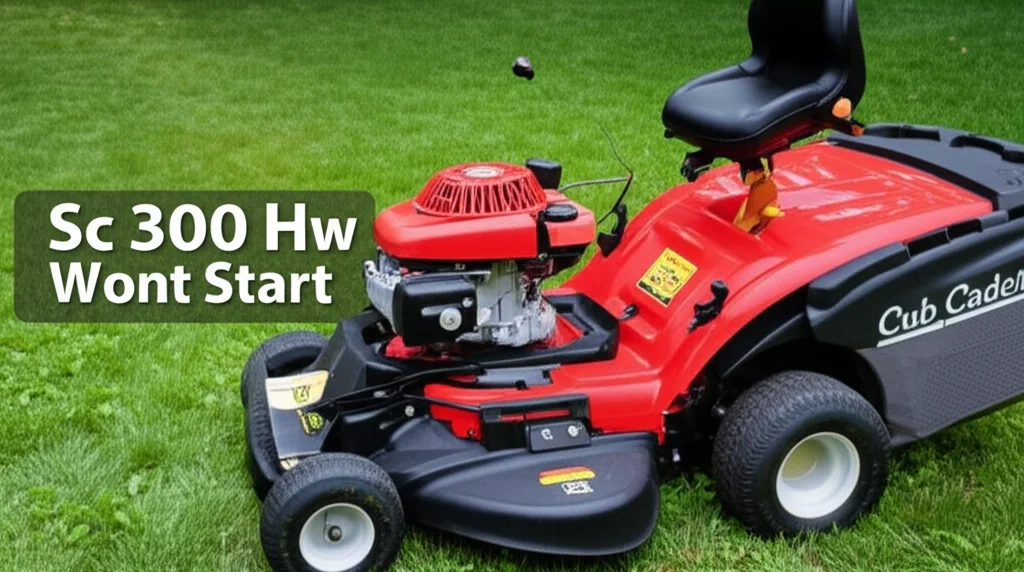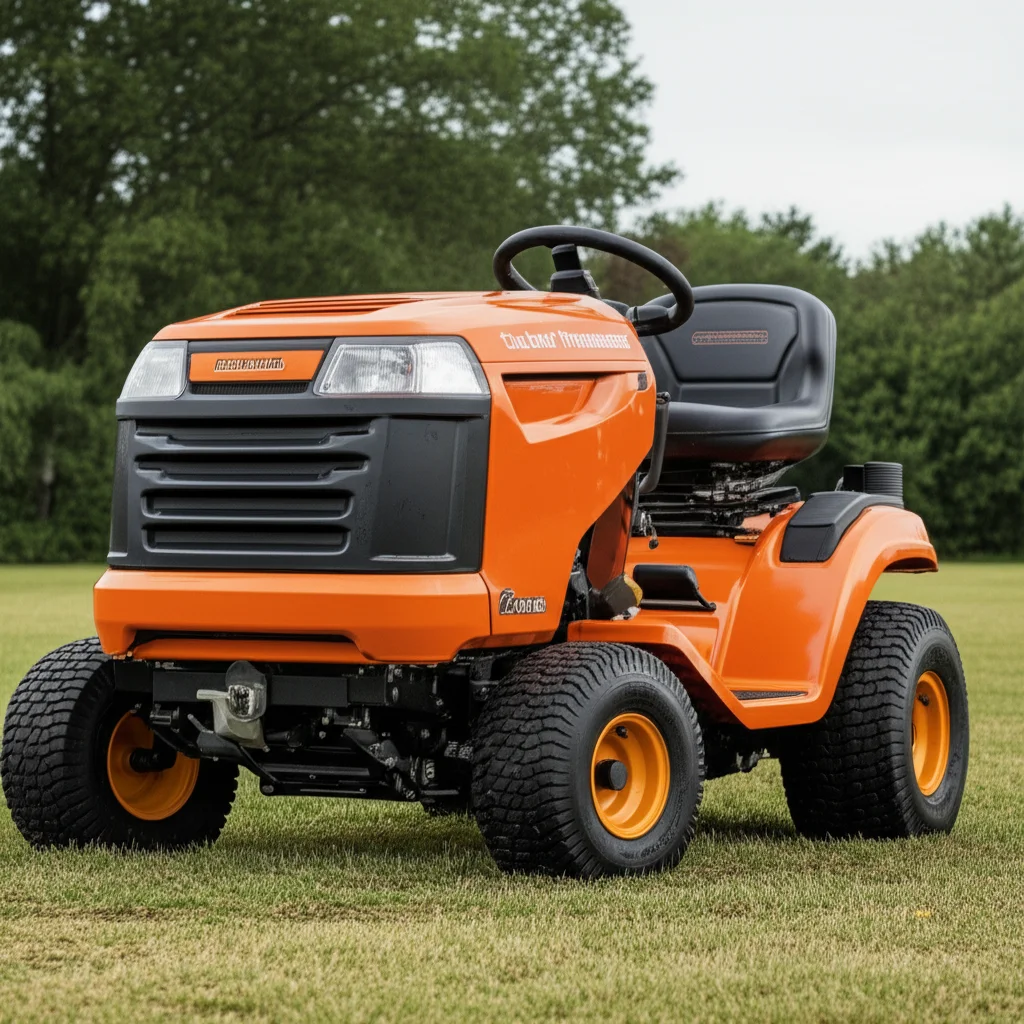· Lawn Mower Repair · 6 min read
Cub Cadet Xt1 Starter Problems

Cub Cadet XT1 Starter Problems: A Comprehensive Guide
Is your Cub Cadet XT1 refusing to start, leaving you with an unmowed lawn? A non-starting mower is incredibly frustrating, but often the issue is something you can diagnose and fix yourself. This article will walk you through the most common starter problems with the Cub Cadet XT1, providing clear troubleshooting steps and potential solutions. We’ll cover everything from simple fixes like checking the battery to more involved repairs like replacing the starter solenoid. Let’s get your XT1 back in action!
Takeaway:
- Check the battery connection and charge.
- Inspect the starter solenoid for proper function.
- Examine the starter motor itself for damage.
- Ensure the safety switches are functioning correctly.
- Consider a professional repair if you’re uncomfortable with electrical or mechanical work.
Quick Answer:
Cub Cadet XT1 starter problems often stem from a weak battery, a faulty starter solenoid, a damaged starter motor, or issues with the safety switches. Regularly maintaining your battery and checking connections can prevent many starting issues.
1. Understanding the Cub Cadet XT1 Starting System
Before diving into specific problems, it’s helpful to understand how the Cub Cadet XT1 starting system works. The system relies on a series of components working together to crank the engine. First, you turn the key, which activates the starter solenoid. This solenoid then sends power from the battery to the starter motor, causing it to spin and engage the engine’s flywheel. If any part of this chain fails, your XT1 won’t start. Understanding this process will help you pinpoint the source of the problem.
2. Battery Issues: The Most Common Culprit
A weak or dead battery is the most frequent cause of starting problems in any riding mower, including the Cub Cadet XT1. Batteries lose their charge over time, especially during periods of inactivity. First, visually inspect the battery terminals for corrosion. Clean them with a wire brush if necessary. Then, use a voltmeter to check the battery voltage; it should read around 12.6 volts when fully charged. If the voltage is low, try charging the battery with a battery charger. If it won’t hold a charge, it likely needs replacing. Don’t underestimate the importance of a healthy battery!
3. Diagnosing a Faulty Starter Solenoid
The starter solenoid acts as a switch, directing power to the starter motor. If the solenoid is faulty, it won’t allow current to flow, even with a fully charged battery. You can test the solenoid by listening for a click when you turn the key. If you don’t hear a click, the solenoid may be bad. You can also use a multimeter to check for voltage at the solenoid when the key is turned. If there’s no voltage, the issue could be a faulty ignition switch or wiring problem. Replacing a starter solenoid is usually a straightforward repair. For more information on general riding mower issues, check out this article on Cub Cadet walk-behind mower problems.
4. Inspecting the Starter Motor
If the solenoid is working correctly but the engine still won’t crank, the starter motor itself may be the problem. The starter motor can fail due to worn brushes, a damaged armature, or internal shorts. Visually inspect the starter motor for any signs of damage, such as cracks or melted plastic. You can also try bypassing the solenoid (with extreme caution!) to directly apply power to the starter motor. This should only be done by someone with electrical experience. If the motor still doesn’t turn, it needs to be replaced. Sometimes, simply cleaning the starter can resolve minor issues; you can find helpful tips on how to clean a starter.
5. Safety Switch Problems and How to Address Them
Cub Cadet XT1s are equipped with multiple safety switches designed to prevent accidental starting. These switches are located under the seat, on the brake pedal, and in the blade engagement lever. If any of these switches are faulty or misaligned, they will prevent the starter from engaging. Check each switch to ensure it’s functioning correctly. You can usually test them with a multimeter to see if they are completing the circuit when activated. Sometimes, simply adjusting a switch or cleaning its contacts can resolve the issue. If you’re experiencing other issues with your Cub Cadet, you might want to explore Cub Cadet EFI engine problems.
6. Wiring and Connections: Don’t Overlook the Basics
Loose or corroded wiring connections can also cause starting problems. Carefully inspect all wiring connections related to the starting system, including those at the battery, solenoid, starter motor, and safety switches. Tighten any loose connections and clean any corroded terminals. Look for any damaged or frayed wires and replace them if necessary. A visual inspection of the wiring harness can often reveal hidden problems. Remember, a solid electrical connection is crucial for a reliable start.
7. Fuel System Considerations & Their Impact on Starting
While this article focuses on the starter specifically, a fuel system issue can mimic a starting problem. If the engine cranks but doesn’t fire, the problem might be a lack of fuel. Check the fuel level, fuel filter, and fuel lines for obstructions. A clogged fuel filter or a faulty fuel pump can prevent fuel from reaching the engine. If you suspect a carburetor issue, consider Cub Cadet zero-turn carburetor problems for troubleshooting tips.
FAQ: Cub Cadet XT1 Starter Issues
Q: My XT1 clicks when I turn the key, but the engine doesn’t crank. What could be wrong? A: This usually indicates a problem with the starter motor or the starter drive. The solenoid is likely working, sending power, but the motor isn’t engaging the flywheel. Inspect the starter motor for damage and consider replacing it.
Q: How do I know if my battery is bad? A: A voltmeter reading below 12.6 volts when fully charged suggests a weak battery. If the battery won’t hold a charge after being charged, it’s likely time for a replacement.
Q: Where are the safety switches located on the Cub Cadet XT1? A: The primary safety switches are under the seat, on the brake pedal, and in the blade engagement lever. Check each one for proper function.
Q: Can a dirty air filter cause starting problems? A: While not a direct cause, a severely clogged air filter can restrict airflow and make it harder for the engine to start, especially in combination with other issues. Make sure to clean your air filter.
Q: Is it safe to bypass the starter solenoid for testing? A: Bypassing the solenoid is extremely dangerous and should only be attempted by someone with extensive electrical experience. It involves directly applying power to the starter motor and can result in serious injury or damage.
Conclusion
Troubleshooting Cub Cadet XT1 starter problems can seem daunting, but by systematically checking the battery, solenoid, starter motor, safety switches, and wiring, you can often identify and resolve the issue yourself. Remember to prioritize safety and disconnect the battery before working on any electrical components. If you’re uncomfortable with any of these repairs, don’t hesitate to consult a qualified mechanic. Getting your XT1 starting reliably will save you time and frustration, allowing you to enjoy a beautifully mowed lawn. Don’t let a simple starting problem keep you from enjoying your outdoor space – tackle it head-on and get back to mowing!
- Cub Cadet XT1
- Starter Problems
- Riding Mower Repair


